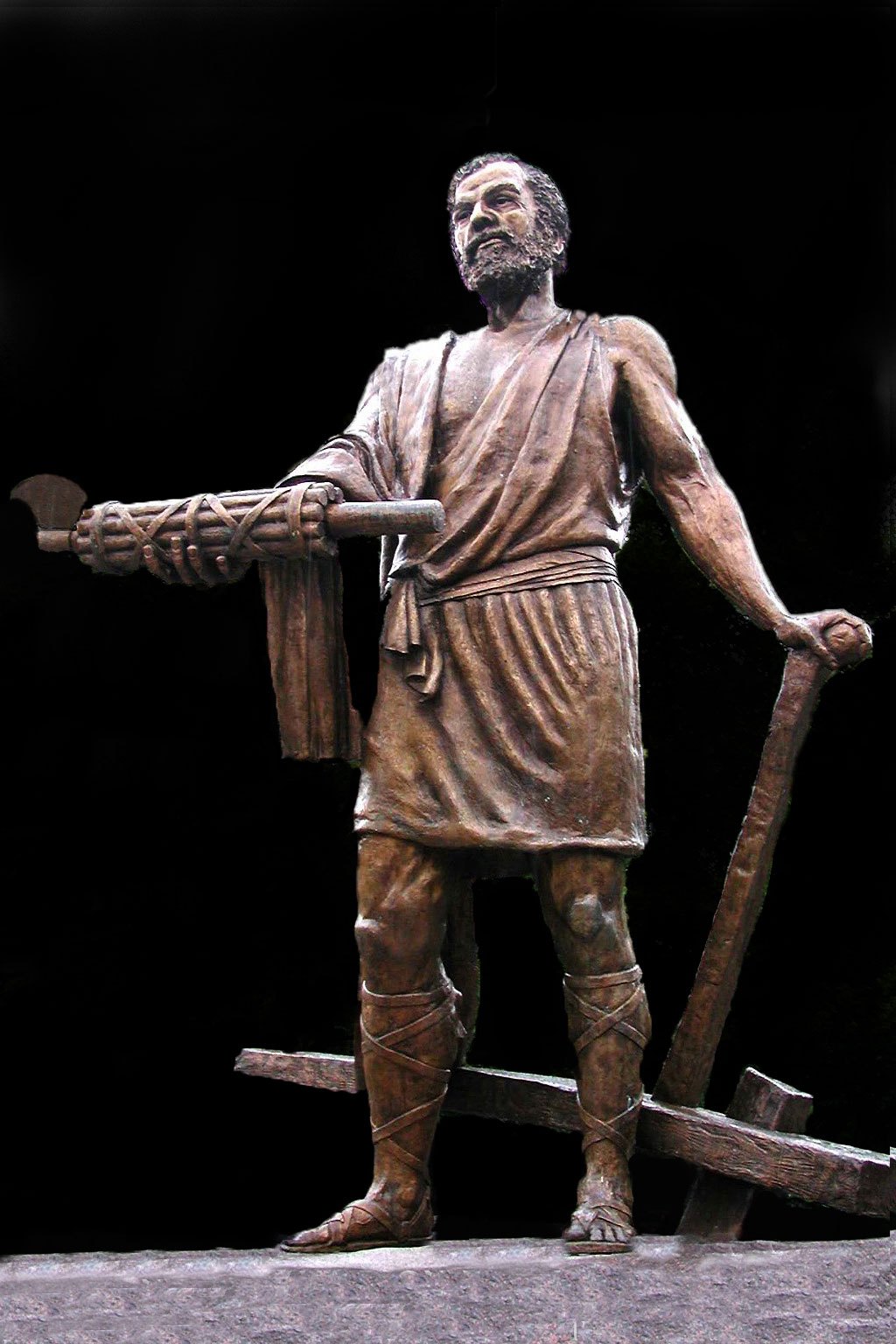458 BC
Cincinnatus appointed dictator
Statue of Cincinnatus in Cincinnati, Ohio, USA
Title: Cincinnatus
Artists: Eleftherios Karkadoulias, sculptor; Mercene Karkadoulias and Anitsa Zalants, assistants
Date: 1982. Installed May 1, 1988; dedicated May 10, 1988
Medium: figure: bronze with patina; base: pink granite.
The statue shows Cincinnatus extending fasces (a bundle of rods surrounding an axe) in his right hand while resting his left hand on his plow. The gesture symbolizes Cincinnatus surrendering the symbol of a Roman Magistrate’s imperium (fasces) and willingly returning to his occupation of farming.
Cincinnatus was a Patrician and a prominent person in Rome. His son, Caeso, was involved in an altercation during which a person that he struck, later died. During a political debate over a law that provided for a commission that would supervise the behavior of the consuls, Caeso was accused of murder by the Tribune who sponsored the law. The sentiment of the plebs was to incarcerate Caeso until his trial. The Patricians argued against incarceration. Cincinnatus put up money as bail promising Caeso’s appearance at trial. His son, however, fled the city, and Cincinnatus lost his wealth when he forfeited his son’s bail. Cincinnatus was forced to move into a farming hut outside of town. It was there that a delegation from the city came to beg Cincinnatus to become dictator because the Volsci and Aequi were threatening Rome. Cincinnatus took the job, called a levy, led the Romans to victory then relinquished the office after 16 days.

